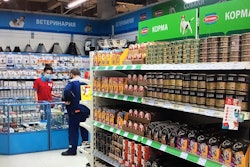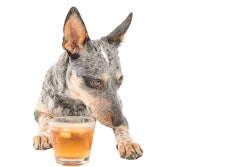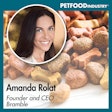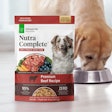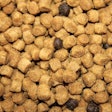
The Association of American Feed Control Officials (AAFCO) held its "Mid-Year" Meeting in virtual format on January 19–21, 2021. As is typical during most AAFCO meetings, the agenda of the Ingredient Definitions Committee had the most items and took the longest to discuss. In fact, deliberation on a number of items was postponed until the following week via teleconference.
Ingredient definitions and rulings
Black soldier fly larvae: Finally, black soldier fly larvae has been defined for use in pet foods, specifically in dog products intended for adult maintenance only. Action by the committee was delayed for a week until it could be confirmed that yes, the definition (which only references "dog food") included use in dog treats as well as complete and balanced foods. This inclusion in treats would be contingent on the product being conspicuously identified to be "for adults," though. While there are several procedural steps necessary before this new intended use will appear in the AAFCO Official Publication (and even longer before it becomes "official"), for all intents and purposes there would likely be little regulatory consternation about its use at this juncture.
Hemp: It was reported that the AAFCO investigator received a submission in support of a new definition for hempseed cake for use in feeds for laying hens. There is still no news of any planned definition proposal for a hemp-based item intended for inclusion in pet foods.
MSBC: The controversy regarding the inclusion of menadione sodium bisulfite complex in pet food formulations has not been resolved. While enforcement actions by individual states are not being contemplated for the immediate future, failure to come up with a viable solution may compromise continued use of this nutritionally prudent ingredient, hypothetically impacting the very ability of the industry to market fish-based complete and balanced cat foods moving forward. A working group has been formed to deliberate on the matter and devise a workable regulatory solution.
Poultry ingredients: Proposed amendments to the definitions for "poultry" and "poultry meal " would add the caveat "(except as unavoidable in good processing practices)" after the specification that the ingredients must be "exclusive of feathers." The allowance for reasonable deviation from the strict interpretation of the existing definitions has always been implied; i.e., no one could sensibly demand the ingredient contain absolutely zero feathers. So, while some attendees expressed concern about the lack of quantification as to how many feathers constitutes an "unavoidable" amount, as a practical matter these amendments should not seriously undermine the quality standard.
Vitamins: A new version of a proposed table of common vitamin names to be allowed on retail pet food labels was discussed. There is still lack of consensus as to how it should be implemented. Some parties would decidedly prefer a system by which an imprecise common term would wholly replace the actual ingredient name (e.g., "vitamin B1" vs. "thiamine mononitrate") on the label. However, the majority opinion at present is that a hybrid solution wherein a manufacturer is permitted the option to predominantly declare the vitamin by its common name but with the actual ingredient name still appearing in parentheses would best satisfy both the regulatory need for transparency and accuracy while also adding useful information to the consumer's benefit. No action was taken pending further deliberation.
Other working group discussions
Common Food Index: The oddly named but nonetheless important "Not-Defined Workgroup" reported no further progress to date. It intends to eventually provide an index of common foods that do not require a formal AAFCO definition, such as whole fruits and vegetables. While the list can never be all-inclusive, it would provide some guidance to manufacturers as to what is generally acceptable in pet foods.
"Human Grade": The same as what was reported at the last AAFCO meeting (and the meeting before that) can be reported now — the "Human Grade" working group needs more time to complete its recommendations wherein the U.S. Department of Agriculture's Agricultural Marketing Service would certify the processes of companies wishing to make the claim under AAFCO standards. As explained, the working group has not been able to draft standards that would expressly cover all contingencies. It is now envisioning less encompassing guidance with long-term oversight by a standing task force to deal with atypical circumstances on a case-by-case basis. Hopefully, a finished proposal will be received for consideration by AAFCO at the Annual Meeting in August 2021.
Ingredient submission workshop: A workshop to help educate interested parties in the processes by which new ingredients can be deemed acceptable for use in animal feeds is moving forward with development of content, format and speaker assignments. Originally scheduled to be an in-person event held in conjunction with the AAFCO 2021 Annual Meeting, depending on circumstances it may be moved to the 2022 Mid-Year Meeting or delivered virtually at some juncture.
Briefly: Top 5 takeaways
- AAFCO’s “Mid-Year” Meeting was held online in January 2021, and the Ingredient Definitions Committee had more business to discuss than any other group.
- Black soldier fly larvae has been defined for use in dog food products intended for adult maintenance only.
- A working group has been formed to devise a workable regulatory solution regarding the inclusion of menadione sodium bisulfite complex in pet food.
- The "Human Grade" working group still needs more time to complete its recommendations wherein the USDA’s Agricultural Marketing Service would certify the processes of companies wishing to make the claim under AAFCO standards.
- A workshop to help educate interested parties in the processes by which new ingredients can be deemed acceptable for use in animal feeds is in development.




